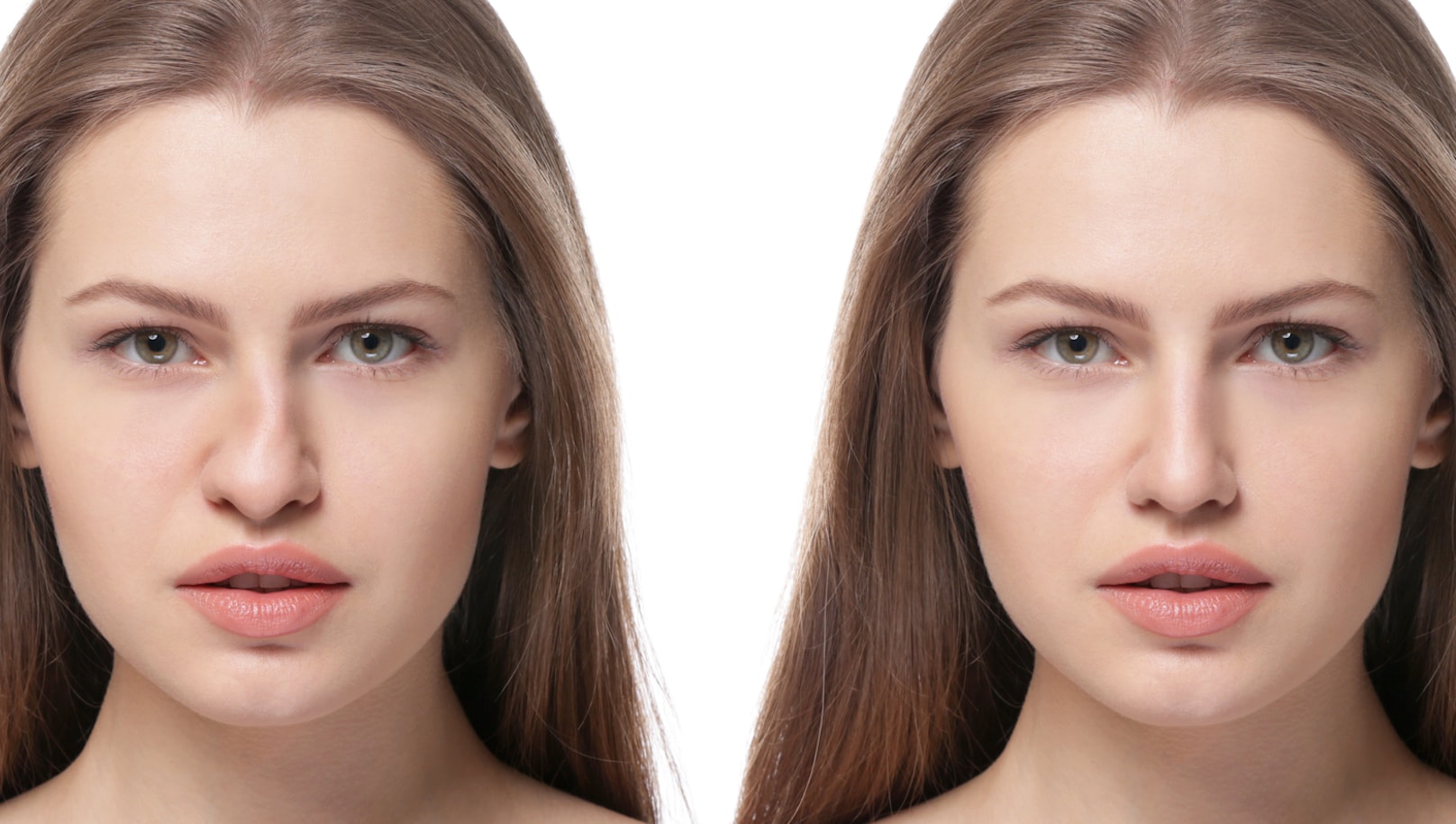Some Of Rhinoplasty Surgeon Austin
Table of ContentsRhinoplasty Surgeon Austin Can Be Fun For EveryoneSome Of Rhinoplasty Austin TxThe Greatest Guide To Austin Rhinopasty Surgeon
Based upon the readily available location of nasal skin, the cosmetic surgeon chooses the location for the bilobed flap, and orients the pedicle. If the defect remains in the lateral element of the nose, the pedicle is based medially. If the defect is at the nasal pointer, or at the nasal dorsum, the pedicle is based laterally.

The outer semi-circle specifies the needed length of the two lobes of the skin flap. The inner semi-circle bisects the center of the original wound, and continues throughout the donor skin, developing limitation procedure of the pedicle common to the 2 lobes of the flap. The surgeon then draws two lines from the pinnacle of the injury; the very first line drawn is at an angle of 45 degrees from the long axis of the wound, and the second line drawn is at a 90-degree angle from the axis of the wound.
The delineation of each of the 2 lobes of the flap starts and ends at the inner semi-circle, and encompasses the external semi-circle, to the point where it intersects its central axis. The width of the first lobe is roughly 2 mm narrower than the width of the injury; the width of the second lobe is roughly 2 mm narrower than the width of the first lobe.
The wound is deepened, to the nasal skeleton, to accommodate the tissue density of the bilobed flap (austin rhinopasty surgeon). Technically, cutting the wound, expanding it, is preferable, and much safer, than cutting (thinning) the flap to fit the injury. Undermining the donor site for the second lobe allows closing it mainly; it also removes excess-skin "dog-ears" at the donor website.
II. Nasolabial flap In the 19th century, the surgical methods of J.F. Dieffenbach (17921847) popularized the nasolabial flap for nasal reconstruction, for which it remains a foundational nose surgery treatment. The nasolabial flap can be either superiorly based or inferiorly based; of which the superiorly based flap is the more useful rhinoplastic application, because it has a more versatile arc of rotation, and the donor-site scar is inconspicuous.
The Facts About Rhinoplasty Surgeon Austin Revealed
The blood supply for the flap pedicle are the transverse branches of the contralateral angular artery (the facial artery terminus parallel to the nose), and by a confluence of blood vessels from the angular artery and from the supraorbital artery in the median canthus, (the angles formed by the meeting of the upper and lower eyelids) (rhinoplasty austin tx).
The nasolabial flap is a random flap that is emplaced with the proximal (near) part resting upon the lateral wall of the nose, and the distal (far) part resting upon the cheek, which includes the primary angular artery, therefore is perfused with retrograde arterial circulation. Surgical strategy the nasolabial flap The pedicle of the nasolabial flap rests upon the lateral nasal wall, and is shifted a maximum of 60 degrees, in order to avoid the "bridge impact" of a flap emplaced across the nasofacial angle.
The shape of the skin flap is cut from the wound template made by the surgeon. An incision is made to the flap (without an anaesthetic injection of epinephrine), which then is raised and oriented, in an inferior-to-superior instructions, in between the subcutaneous fat and the muscle fascia. The cutting continues till the skin flap can be easily transposed upon the nasal problem.
The flap then is bent back (shown), and can be thinned (cut) under loupe magnification; nevertheless, a nasolabial flap can not be thinned as easily as an axial skin-flap. rhinoplasty surgeon austin. After the nasolabial flap has been emplaced, the flap donor-site injury is sutured closed. For a wound of the lateral nasal wall that is less than 15 mm broad, the flap donor-site can be closed mainly, with stitches.

Such risks are avoided by advancing (moving) the skin of the cheek towards the nasofacial junction, where it is sutured to the deep tissues. Moreover, a narrow injury, you can try these out less than 1 mm broad can be permitted to heal by secondary objective (autonomous re-epithelialisation). III. The paramedian forehead flap The paramedian forehead flap is the premier autologous skin graft for the restoration of a nose, by changing any of the aesthetic nasal subunits, particularly relating to the issues of various tissue thickness and skin color.
Limited length is an useful application limitation of the paramedian forehead flap, specifically when the client has a low frontal hairline. In such a client, a little part of scalp skin can be included to the flap, but it does have a different skin texture and does continue growing hair; such mismatching is prevented with the transverse emplacement of the flap along the hairline; yet that part of the skin flap is random, and so runs the risk of a greater occurrence of necrosis.
The Facts About Austin Rhinopasty Surgeon Revealed
Nevertheless, the second phase of the nasal reconstruction can be carried out with the client under local anaesthesia. Visually, although the flap donor-site scar heals well, Visit This Link it is visible, and thus tough to conceal, particularly in men. Nose surgery: A paramedian forehead flap design. Surgical method the paramedian forehead flap The cosmetic surgeon develops the paramedian forehead flap from a custom-fabricated three-dimensional metal foil template originated from the steps of the nasal flaw to be fixed.
Later advice on, the distal half of the flap is dissected and thinned to the subdermal plexus. The surgeon fabricates a metal foil template originated from the dimensions of the nasal wound. Using a Doppler ultrasonic scanner, the cosmetic surgeon determines the axial pedicle of the tissue-flap (made up of the supraorbital artery and the supratrochlear artery), typically at the base, beside the medial eyebrow; the point usually is between the midline and the supraorbital notch.